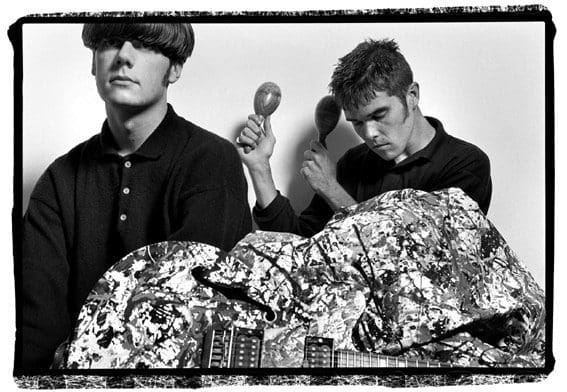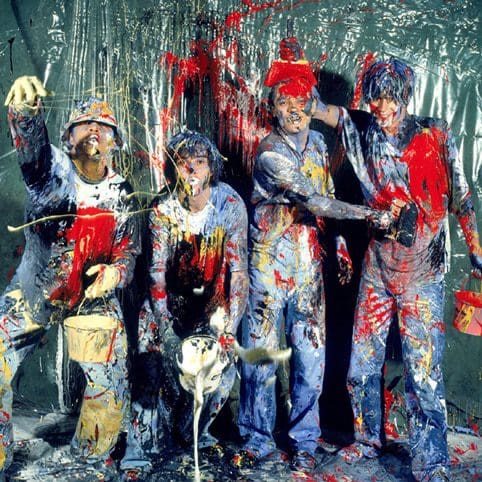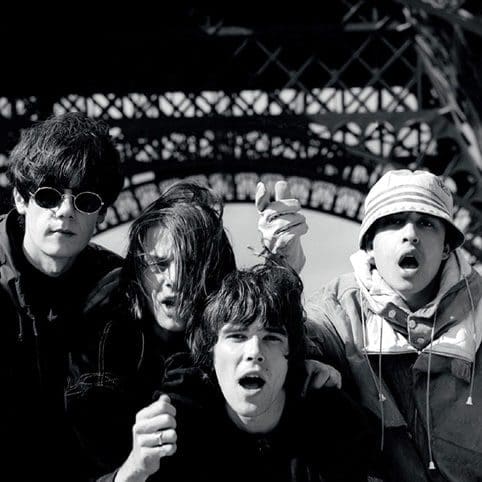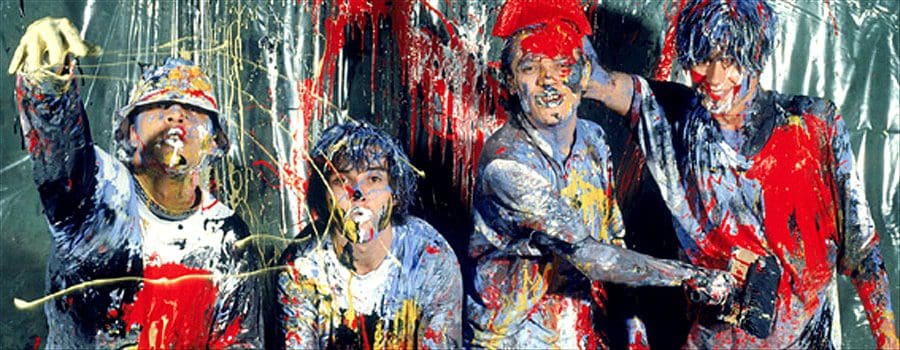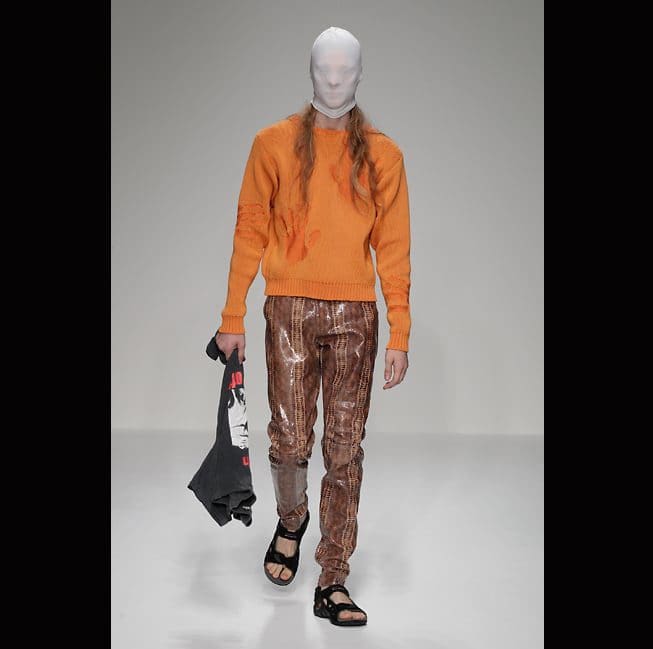by Nick Hagan
Madchester “defined a generation’s lives”: An interview with Kevin Cummins, veteran music photographer
Kevin Cummins comes from the age of the photographic thunderbolt in music. Cutting his teeth on Manchester’s punk scene in the mid-70s, he went on to capture watershed images of numerous era-defining bands, at a time when a talented camera lens held the same galvanising, lightning rod power for artists as social media does now.
Across a rich career, Cummins has remained closely aligned with Manchester and the city’s sonic lifeblood. Joy Division, The Fall, The Smiths, New Order, The Stone Roses, Happy Mondays and Oasis have all been immortalised through his pictures, and outside the Manchester scene he’s also shot The Sex Pistols, The Clash, Manic Street Preachers, Buzzcocks and legions more. Such is the power of Cummins’ images he can even lay claim to having been a significant catalyst in the rise of such musical developments as Madchester and Britpop.
A selection of his shots are currently on display at London’s Whiteleys shopping centre as part of The Stone Roses: The Third Coming, a retrospect of classic photos of the band also featuring the work of Paul Slattery and Ian Tilton. I grabbed a few minutes with the veteran snapper to chat Madchester, contemporary music’s nostalgia trip and paint splatter politics.
What is it that makes the Stone Roses special for so many people – were they really a flashpoint band?
Kevin Cummins: “I think so. I think if you define them by their first album, it’s an album that most age groups and generations still put in their top ten. So it’s really very important.
“I think they’ve also got a very charismatic frontman, and that always helps. [He’s] been widely imitated. Liam [Gallagher] will readily admit that.”
Ian Brown’s appeal seems to lie somewhere between him being a space cadet and a savant…
KC: “Another thing with Ian is that he’s like an old-school reggae singer. In a way it doesn’t matter that he’s not got the greatest voice in the world – he’s got a voice that works with the sound, and that’s really important. It’s when all those elements combine, and it makes a great band. It’s like with Bernard Sumner in New Order – Bernard again isn’t the greatest singer in the world, but it’s that layer of sound that matters with New Order, that gives them a completely different resonance.”
The Stone Roses placed a lot of importance on their visual element – did this make them particularly interesting as photographic subjects?
KC: “For me it did. I’ve worked with bands a lot, and I like people who are visually aware. They had that background, they were very into doing their own artwork and so on. When I did the picture of them covered in paint, what I wanted to do with that shot was to do a career-defining image of them. It could have been a disaster, but it was worth trying. To get John Squire to paint them, and to paint them as one of their record sleeves almost…it became the image that everyone associates with them.”
Did they go for the idea straight away?
KC: “Yeah, they loved the idea. They didn’t love the idea by the end of it because they’d been sitting in cold paint for two-and-a-half hours and there were no showers in the studios, but that was something I broke to them at the end of the shoot rather than at the beginning of it.”
The paint-splatter image seems to sum the band up, and of course there was the infamous incident where they covered Silvertone boss Paul Birch in paint…
KC: “Well they did that after the picture – they probably had a load of paint left over. That gave them the idea to go and throw it over Silvertone as well.”
You’re lucky he didn’t take you to court instead then.
KC: “[Laughs] Yeah, absolutely.”
Does the ‘Madchester’ scene get the recognition it deserves as a musical era? Some might suggest it was quite a niche moment in time that was soon eclipsed by the likes of grunge, before developing into Britpop.
KC: “But, in a way, is it niche? I get asked to talk about it by publications all over the world. Recently I wrote my book on Manchester which I did with Faber, and [though] it wasn’t published in South America I still did interviews with the Brazilian record labels press and the Brazilian national daily press – they all wanted to know about Manchester. So it isn’t niche – it defined a generation’s lives.
“Manchester has had four very definite periods. It had the punk era, with Buzzcocks and so on – the Sex Pistols made a catalyst for that. There was the post-punk era with The Fall, and maybe [finished off] with The Smiths. Then you have the Roses, the Happy Mondays and all of that scene, and then we had the post-comedown period with Oasis. Oasis drew on the three previous periods with their sound. So I think Manchester’s been a vital musical cog in the music industry for maybe three generations.”
Some critics have argued Manchester has lacked a truly inspiring music scene since the Oasis period – what do you make of this?
KC: “I don’t agree. Manchester’s problem was that Oasis became so huge that Manchester became very self-conscious, in the way that Liverpool did. With Liverpool and The Beatles, Liverpool almost became a Beatles theme park. When the first Oasis albums came out, everywhere you went in Manchester for those two years – the shop, the bar, the bloody railway station- all you would hear were Oasis songs. Which was great, and it was the soundtrack to everybody’s lives in that period, but it was very, very difficult for bands to come out of that and do something new. I think that there’s quite a healthy music scene in Manchester – it’s kind of getting back together. But in a way it’s different, because it’s coming out of small bars and smaller communities, whereas in the past it was coming from the [dole] queue and the squats and from people not having to earn much money or needing a job almost – being given money by the government not to work. There are very few cities in the world like that now. Berlin’s maybe one of them. But it’s very difficult for kids these days to decide they want to be in a band unless they earn money, and if you’ve got a full-time job it’s hard to be in a band.
“But there’s a lot of good music – when I went back to see Manchester City at the weekend, there were posters for loads and loads of bands in every pub you go into. What Manchester reminds me off now is Seattle in the late 80s and early 90s – it’s lost that self-consciousness. Where you’d hear bands practising, and you could go to any bar in the city centre and bands were playing in there, and are playing because they love it, not because they want to be the next Oasis. I think [Manchester] is worth investigating again – it did go through a period where it veered on the theme park, but where else is there?”
Well, London….?
KC: “I don’t think London is though – you can’t say there’s a specific London sound. And I think London’s a series of villages anyway.”
What do you make of the Stone Roses reunion – is it part of a more general trend for nostalgia in rock music at the minute?
KC: “I think on one hand it is, and there’s a massive thirst for nostalgia in the UK. That’s partly because younger people buy music differently now. People of my generation or people in their 30s and 40s who can actually remember going to a record shop and spending their money on products still like that idea – there’s only so much room for music in your life, and you want the stuff you’re familiar with. So there is a sense that it is like that, but also with the Roses I think it was unfinished business really. They had one album and then they had a massive, massive issue with their record company, who stitched them up for years. Gareth [Evans, their ex-manager,] was even worse. It took them five years to bring a record out that, in a way, they weren’t going to be happy with, because it was a contractual obligation. Then it all blew up because they were all just pulling in different directions, because of that. They made one of the five or six greatest debut albums of all time and then a record that had potential and had some great tracks on it. But I think there are more songs in those people, and it’ll be interesting to see what they come out with. I went to see them in Barcelona at the weekend for their first gig, and they were fantastic.”
The Stone Roses – The Third Coming exhibition is showing until 12 August at ‘The Space’ in Whiteleys, London www.whiteleys.com
The Stone Roses are playing Heaton Park, Manchester 29th & 30th June and 1st July. www.thestoneroses.org
Photography & Music Article by Nick Hagan


